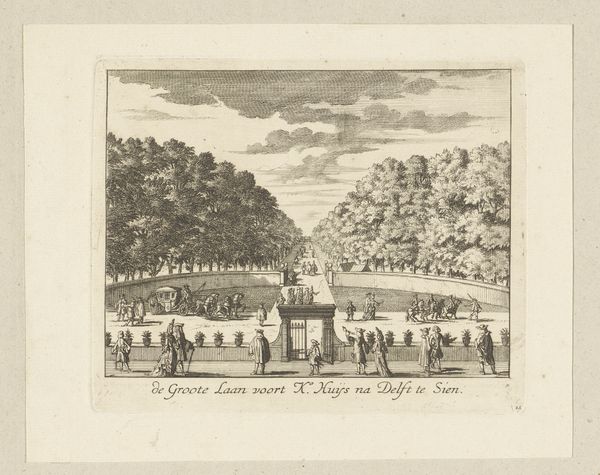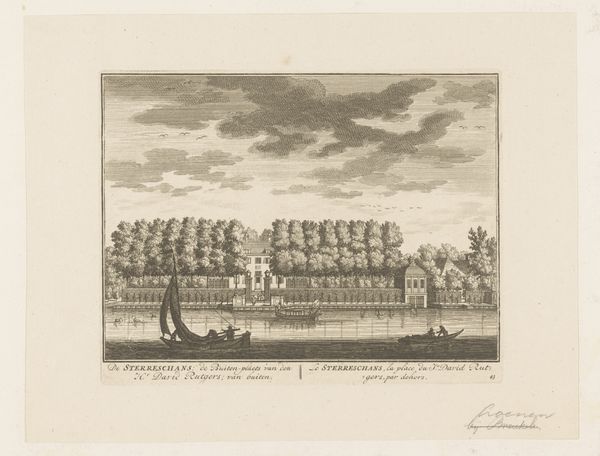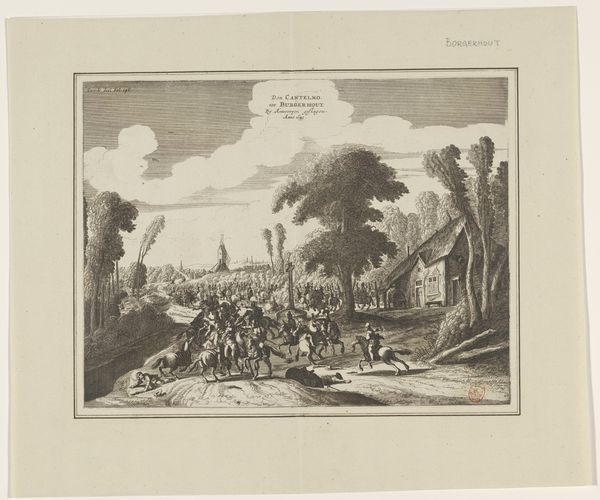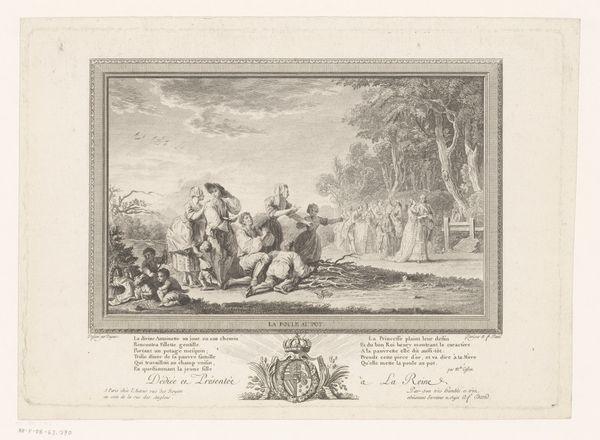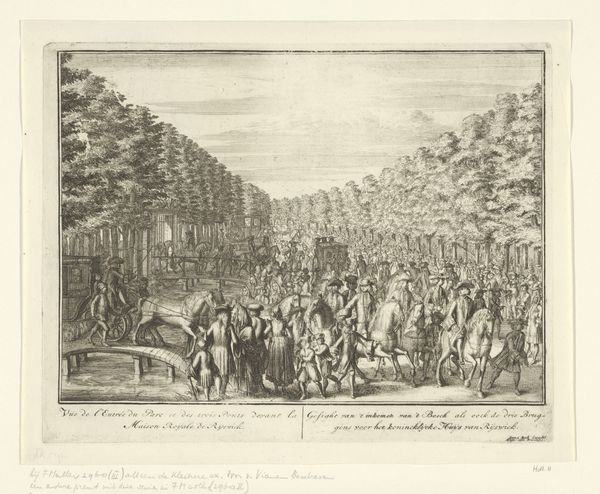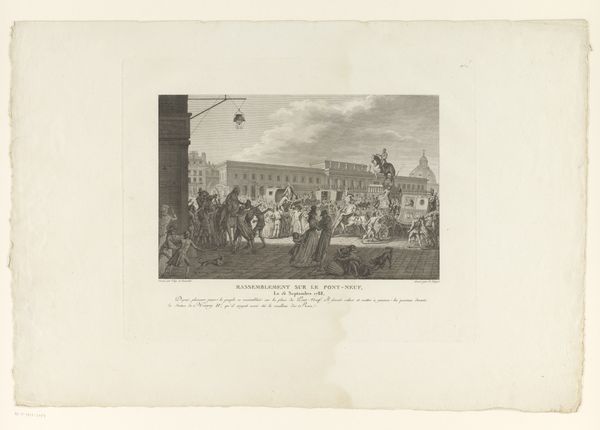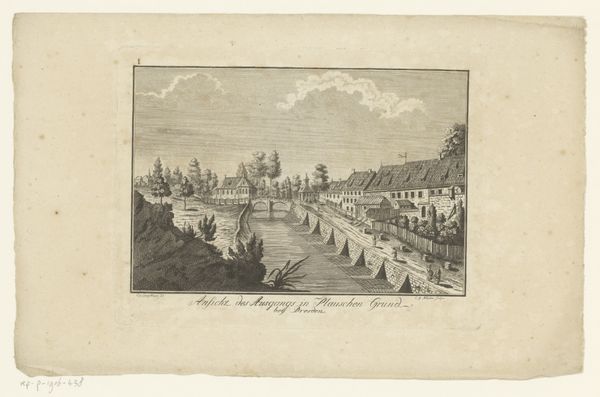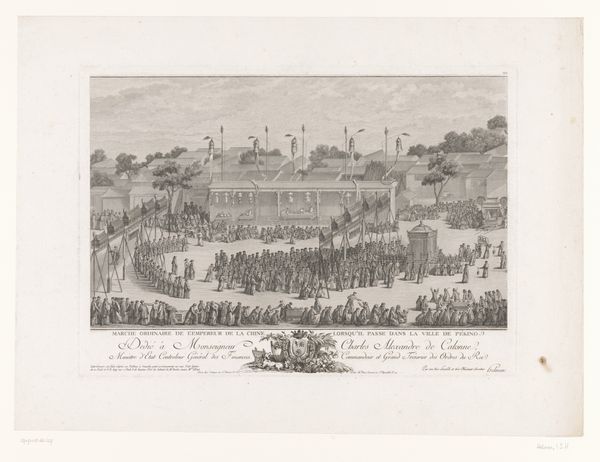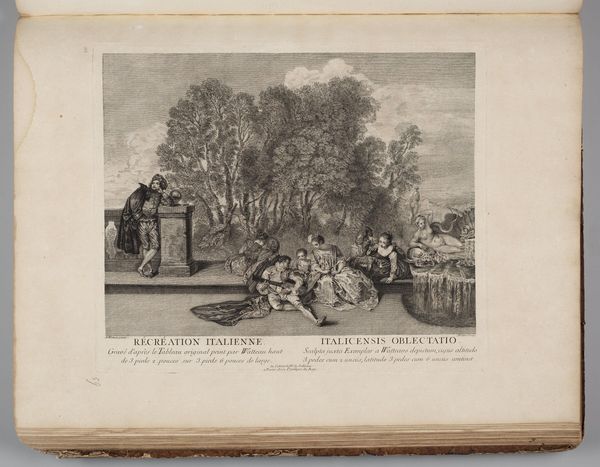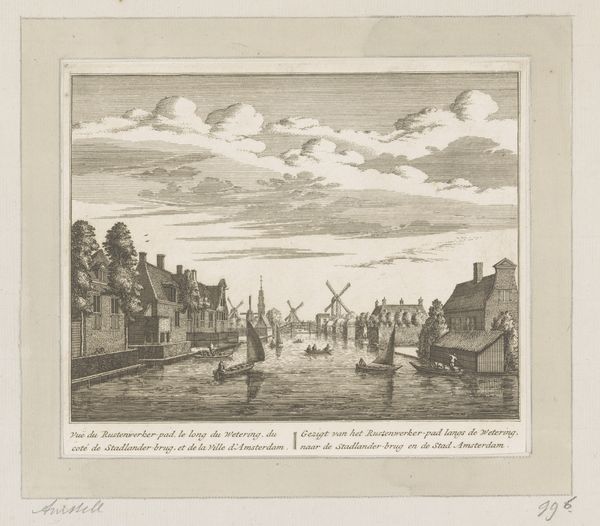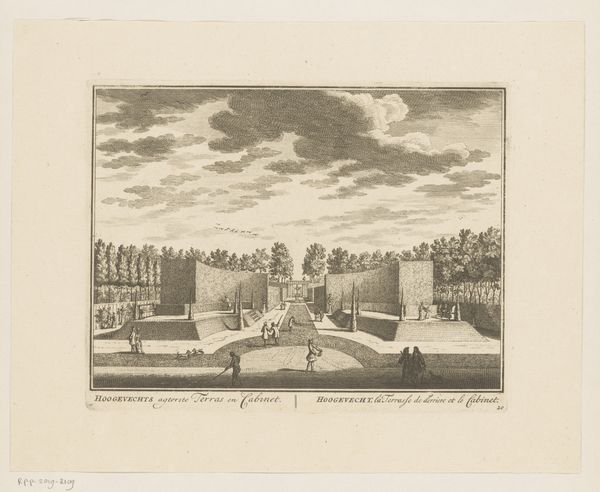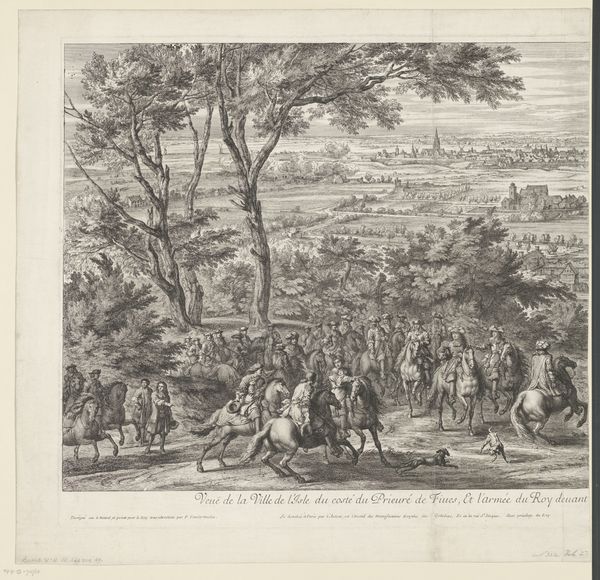
print, engraving
#
baroque
#
dutch-golden-age
# print
#
landscape
#
perspective
#
cityscape
#
engraving
Dimensions: height 172 mm, width 206 mm
Copyright: Rijks Museum: Open Domain
Curator: What a wonderfully precise rendering. The symmetry is striking! Editor: It’s quite interesting isn't it. We're looking at an engraving from 1718, titled "View of the Grotto and Fountain in the Garden of Rosendael Castle," by Jan (I) Smit. Currently, it resides within the Rijksmuseum's collection. Curator: Printmaking like this really highlights the skills involved. I'm drawn to the artist's mastery of line, the process itself… How long it must have taken to meticulously etch all of this detail! Think about the various states this engraving must have passed through. Editor: And that dedication certainly served its purpose. This image provided visual propaganda. Rosendael was a popular destination in the 18th century. Representations like these played a key role in promoting the site, shaping the aristocratic experience of leisure and solidifying the status of the owners. Curator: Agreed. The materiality itself becomes a form of dissemination. From the paper it's printed on to the ink used for distribution, the tangible form becomes essential. Editor: Indeed. It circulated widely, constructing and reflecting very specific ideals about beauty, class, and nature. Look how controlled that ‘nature’ really is, and so distant from the Dutch Golden Age landscapes from only decades before! This image says a lot about power in its moment. Curator: But even now, the formal elements are what draw me in most. I find the play of light and shadow created solely with line work mesmerizing. The way it describes the textures of stone and water is so intriguing from a purely technical perspective! The way the labor becomes art! Editor: For me, it’s about how this idyllic view fits into the historical narrative. It served a purpose in constructing cultural identity and hierarchies in its time, and how it continues to be seen as precious today is crucial to consider when examining it. Curator: Interesting. Well, either way, it’s still an impactful work. Editor: Definitely. A telling example of art as a historical artifact.
Comments
No comments
Be the first to comment and join the conversation on the ultimate creative platform.
